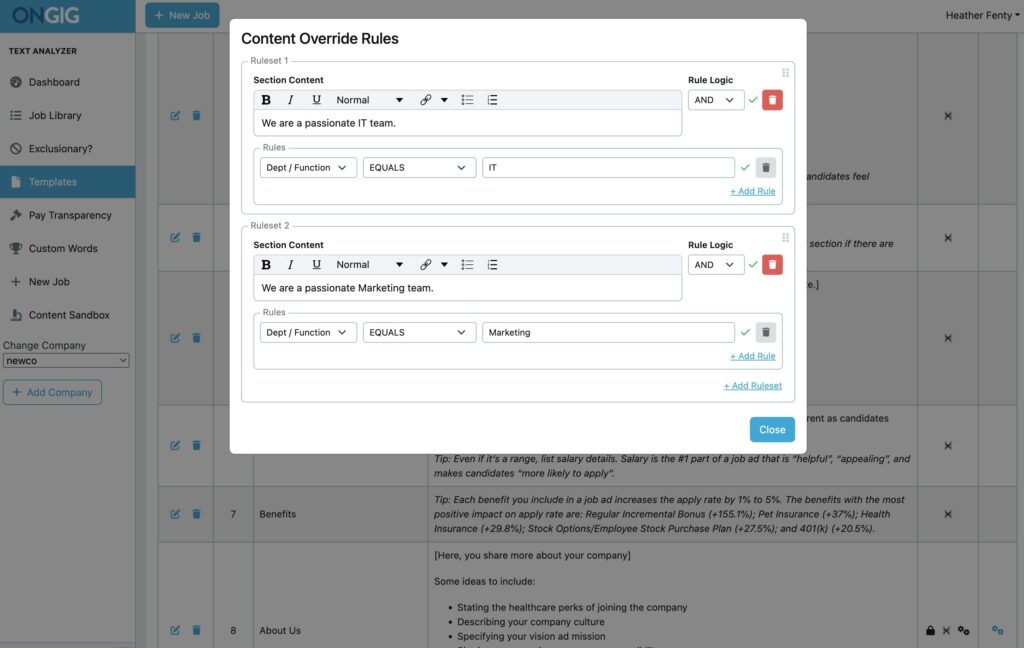- 16 Helpful Career Site Self-Service Tools for You - December 18, 2025
- Last Week I Had a Viral LinkedIn Post — But Why? (And What TA Folks Can Learn From It) - December 8, 2025
- Job Description Process Improvement: How One Workflow Fix Saved 1,200 JDs from Chaos - December 4, 2025
Nothing says “surprise!” like legal showing up with a job posting disclaimer request.
It always feels last-minute, doesn’t it? But when there’s an acquisition, investment, or structural change — suddenly, every job needs a new legal note. Everywhere. Fast.
This exact thing came up on a client call last week. They told us their company had just partnered with a private equity firm, and now they’re legally required to add a new disclaimer to:
- Every job posting
- The main careers page
- Any satellite pages (like Veterans or Internships)
This kind of thing is becoming more common. It’s not just for M&A events — it could be triggered by new DEI commitments, industry regulations, or ESG reporting standards. So let’s walk through what to do before it becomes a “fire drill”.
What a Legal Disclaimer for Job Postings Looks Like
Legal disclaimers vary, but they usually look something like this:
“[Company Name] is now part of a minority investment partnership with [PE Firm Name]. Our attest services have been moved to a separate entity as of [Date]. All roles posted reflect this change.”
It’s not glamorous, but it matters. If you don’t add it, you could end up with compliance issues or confusion for candidates.
Where to Place a Legal Disclaimer for Job Postings
You’ve got a few options. Which one you pick depends on how visible it needs to be:
- Footer: A universal placement that appears on every job. Great for general disclosures.
- Top of job post: Ideal if the legal team wants it prominent (e.g., before someone applies).
- Sidebar or collapsible section: Less intrusive but still available for those who want the details.
Pro tip: Whatever you do, make sure it’s mobile-friendly. Half your applicants are on their phones.
How to Apply It Globally (Without Losing Your Mind)
If you’ve got hundreds or thousands of job posts, don’t do this manually. Here’s how Ongig clients handle it:
- Global footer template updates: We apply the language once, and it pushes to every job instantly.
- Conditional logic: Need different disclaimers for different job families or locations? We’ve got that covered too.
- Careers page edits: Our team can help update satellite pages like Veterans, Inclusion, or Internships to reflect the new language.

How to Keep Legal Happy (and Not Freak Out Your Recruiters)
Legal teams love precision. Recruiters love speed. Your job? Marry the two without overwhelming candidates.
- Work together on the wording: Make sure it’s accurate but human. Avoid legalese where possible.
- Don’t bury the message: Hiding it too far down the page can backfire.
- Use clear formatting: Italics or bold can help set the disclaimer apart without distracting.
Why I Wrote This
This post came out of a real client request, one where they were racing to meet a compliance deadline after a corporate change. If you ever need to add a legal disclaimer for job postings, don’t panic. Just make sure your tools (and partners) can help you move fast and apply changes globally.
If you’re facing legal language updates or just want help managing job post content at scale, request a demo to see how Ongig can help.
FAQs
- What is a legal disclaimer for job postings?
A short legal notice often required by compliance or legal teams when there’s a corporate, regulatory, or structural change. - Where should I put a legal disclaimer in job posts?
Common placements include the footer, top of post, or sidebar. It depends on visibility needs. - How do I update all job posts with the new language?
If you use a platform like Ongig, global updates can be made instantly without editing every role manually. - Can legal disclaimers vary by job type or location?
Yes — we support conditional logic so you can tailor messages based on role, department, or geography.
